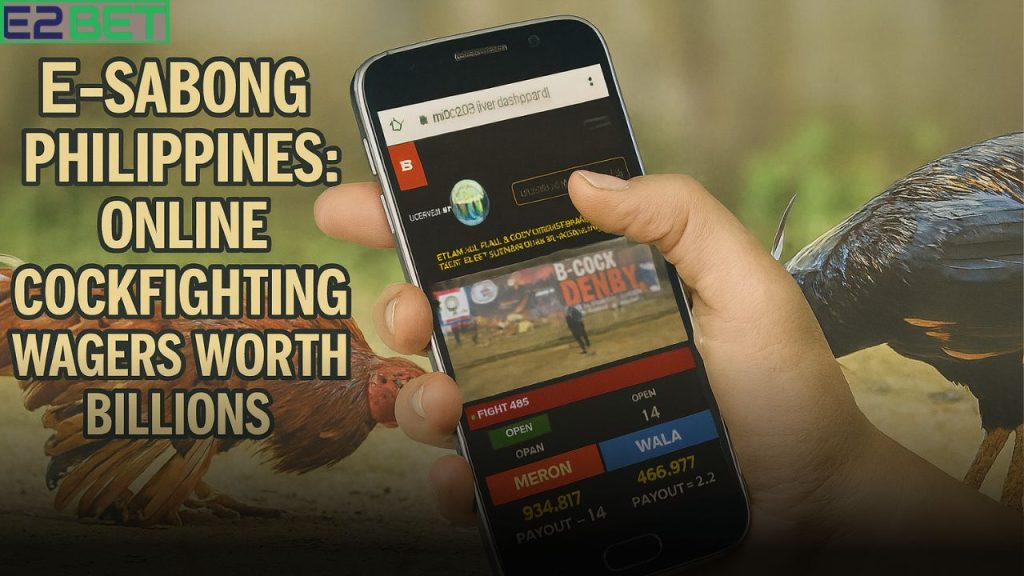E-Sabong Philippines has rapidly grown into a multi-billion peso industry, transforming the country’s traditional cockfighting into a 24/7 online gambling phenomenon. While it generated massive revenues and reshaped the gambling market, it also led to addiction, family ruin, and criminal controversies—including the disappearance of dozens of players. Despite a nationwide ban, illegal platforms continue to thrive, raising urgent questions about regulation, culture, and public safety.
Table of Contents
Discover how E-Sabong Philippines became a billion-peso online cockfighting industry. Learn about its rise, ban, social impact, and ongoing challenges.
The Explosive Rise of E-Sabong Philippines
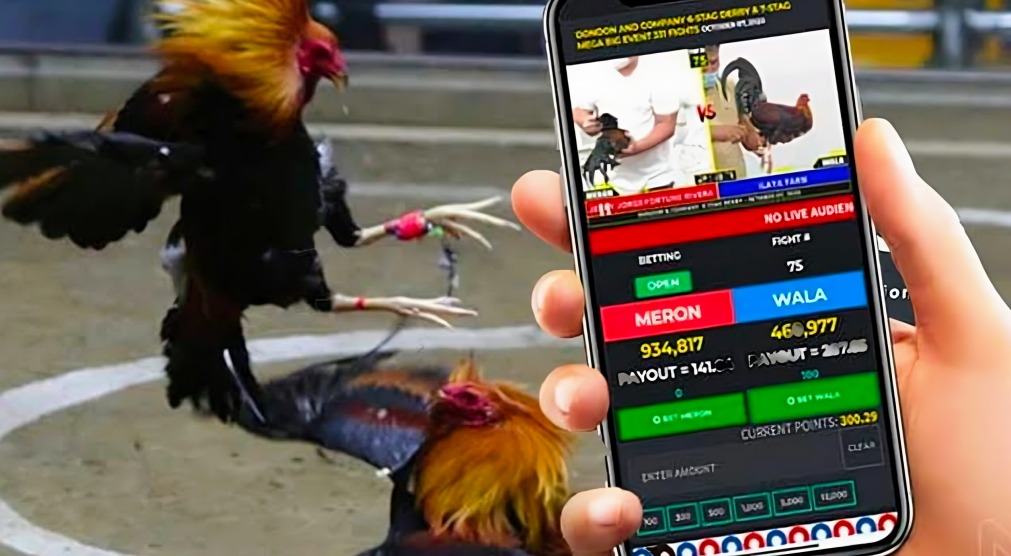
Cockfighting—or sabong—has long been part of Philippine culture, traditionally staged in cockpit arenas where spectators gathered to place bets and socialize. During the COVID-19 pandemic, however, this centuries-old sport transformed into a massive digital enterprise. The shift to E-Sabong Philippines, or online cockfighting, allowed bettors to watch live-streamed matches and wager instantly through apps and digital wallets. What was once a local pastime became a nationwide phenomenon available 24/7.
- Traditional cockfighting moved into the digital space.
- Mobile access and e-wallets made gambling faster and easier.
- Millions of Filipinos participated daily, driving record betting volumes.
Table – Traditional vs Online Cockfighting
| Feature | Traditional Sabong | E-Sabong Philippines |
|---|---|---|
| Venue | Cockpit arenas | Live-streamed via apps/sites |
| Accessibility | Limited to fight days | 24/7 nationwide availability |
| Regulation | Local ordinances | Unregulated post-2022 ban |
| Social Element | In-person gathering | Remote, digital betting |
A Multi-Billion Peso Industry
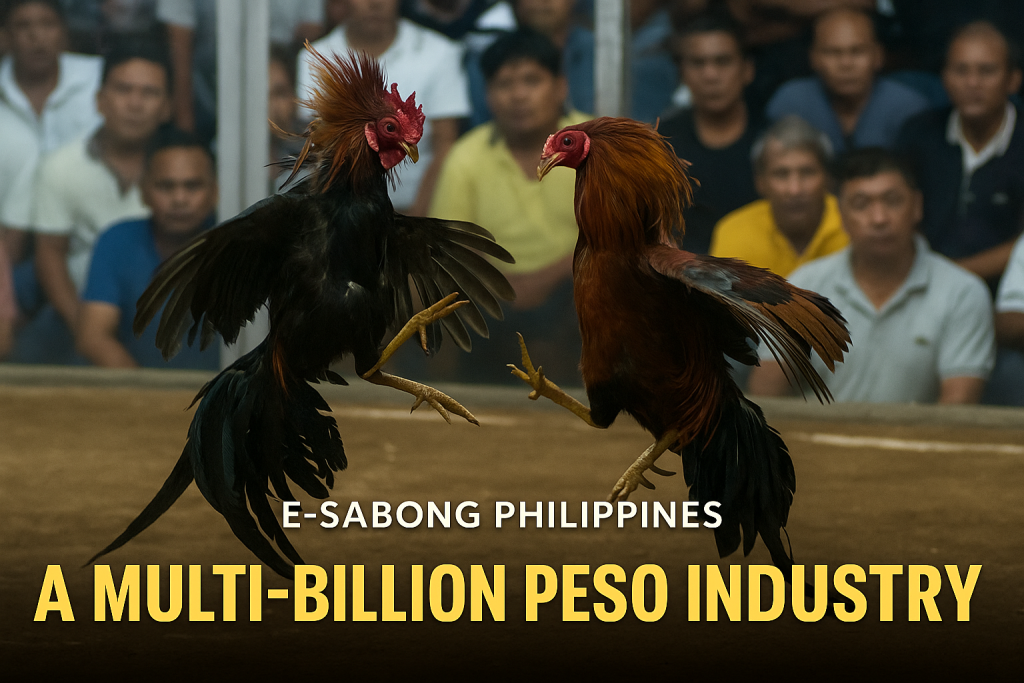
The financial impact of E-Sabong Philippines shocked regulators, lawmakers, and the public. Licensed operators like Lucky 8 Star Quest Inc. were reportedly handling ₱60 billion (~$1.16 billion) in wagers per month. With operators taking a 5% rake, that equated to ₱3 billion in monthly profits. Meanwhile, the Philippine Amusement and Gaming Corporation (PAGCOR) collected ₱640 million monthly from regulated operations—highlighting how much of the market slipped into unregulated channels.
- ₱60 billion wagered monthly via licensed platforms.
- Operators profited ₱3 billion per month in commissions.
- PAGCOR earned only a fraction through regulatory fees.
Table – Financial Breakdown of E-Sabong Philippines
| Category | Estimated Value |
|---|---|
| Total Bets | ₱60 billion (~$1.16B) |
| Operator Earnings | ₱3 billion (~$57M) |
| PAGCOR Revenues | ₱640 million (~$12.2M) |
This scale made E-Sabong Philippines one of the most profitable gambling industries in the nation, rivaling casinos and offshore gaming operators (POGOs).
Legal Ambiguities and Regulatory Gaps
Cockfighting has been legal for decades under the 1974 Cockfighting Law, but E-Sabong Philippines fell into a gray area. PAGCOR briefly legalized and regulated the online format, but growing public backlash over addiction, crime, and missing persons pushed President Ferdinand Marcos Jr. to declare an executive ban on e-sabong in December 2022.
Despite the ban, illegal platforms continue to thrive:
- Offshore operators evade Philippine jurisdiction.
- Black-market sites stream 5,000+ matches, nearly double the regulated average.
- Weak oversight means no betting caps, age checks, or fraud protections.
Quick Facts – Why E-Sabong Philippines Was Banned
- Widespread gambling addiction across communities.
- Families destroyed by debts and financial ruin.
- Missing persons and alleged syndicate links.
- Government losses in tax revenues despite billions wagered.
Social Costs and Addiction
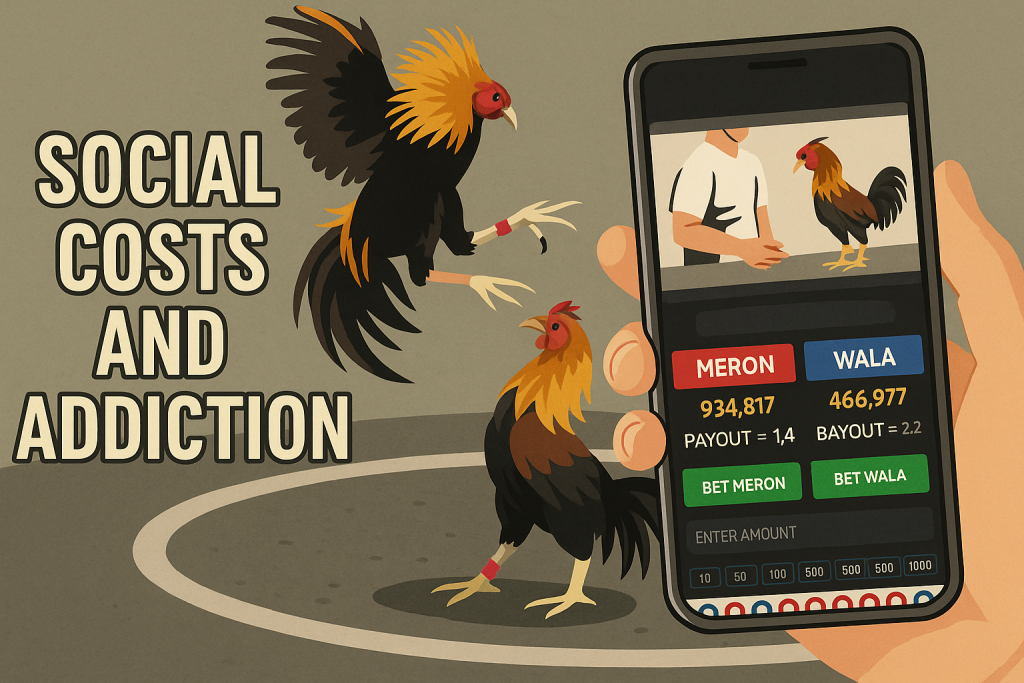
The Hidden Toll on Families and Communities
While online cockfighting (e-sabong) generates billions in wagers, it also carries severe social consequences. Families often bear the burden when a member becomes addicted to gambling. Cases of unpaid debts, pawned belongings, and even household conflicts have been reported. These issues ripple outward, affecting children’s education, family stability, and community trust.
- Families lose essential income to repeated betting losses.
- Children and spouses experience emotional stress and neglect.
- Communities face rising cases of debt and financial disputes.
Table – Key Social Costs of Gambling Addiction
| Impact Area | Consequence |
|---|---|
| Household Income | Loss of savings, unpaid bills, pawned assets |
| Family Relations | Domestic conflicts, neglect, emotional strain |
| Community Trust | Increased debt disputes, financial instability |
| Youth Impact | Exposure to gambling culture at early age |
Addiction and Escalation
Online betting platforms are designed for constant engagement. With 24/7 access through mobile apps and digital wallets, addiction can form quickly. What begins as “small bets” often escalates into compulsive gambling, where players chase losses, believing the next fight will bring recovery.
Psychological studies highlight how dopamine-driven behavior loops—similar to slot machines and online casinos—trap individuals in cycles of risky bets. This can lead to:
- Escalating financial losses.
- Mental health issues like anxiety and depression.
- Criminal behavior (e.g., theft or fraud) to fund gambling.
Missing Persons and Criminal Links
Perhaps the darkest chapter of E-Sabong Philippines is its ties to organized crime. Between 2021 and 2022, at least 34 sabungeros (cockfighting players and bettors) went missing, triggering a Senate investigation.
- Syndicates allegedly abducted rivals and fixed matches.
- Victims were reportedly strangled and dumped in Taal Lake.
- Testimony in 2025 implicated high-profile figures like Atong Ang.
- Law enforcement divers continue to search for bodies.
Key Findings
- Disappearances linked to debts and match-fixing.
- Senators exposed suspected ties to gambling operators.
- Families still demand justice for missing loved ones.
These disappearances stained the reputation of E-Sabong Philippines, transforming it from a cultural pastime into a public safety crisis.
Enforcement Challenges
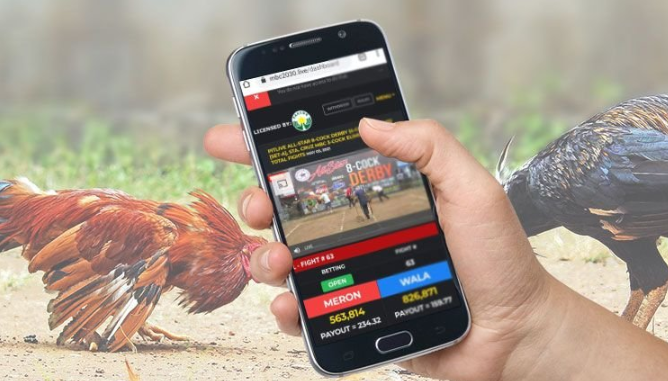
Despite the ban, illegal E-Sabong Philippines platforms remain active and profitable. Operators adapt quickly, using offshore servers and digital wallets to bypass enforcement.
- Sites relocate servers abroad to avoid Philippine laws.
- Digital wallets like GCash and PayMaya enable seamless transactions.
- Aggressive social media marketing lures new bettors daily.
- Lack of international cooperation hampers law enforcement.
Table – Key Enforcement Challenges
| Challenge | Impact |
|---|---|
| Offshore Operations | Authorities cannot shut them down |
| Weak Cyber Policing | Sites reappear quickly after bans |
| E-Wallet Payments | Allow anonymous, easy gambling |
| No Safeguards | Players exposed to fraud & addiction |
Summary Table – E-Sabong Philippines
| Category | Key Insights |
|---|---|
| Economic Scale | ₱60B/month in wagers; billions unregulated |
| Legal Status | Traditional sabong legal, online e-sabong banned since Dec 2022 |
| Operators | Black-market sites dominate with thousands of matches daily |
| Social Impact | Gambling addiction, poverty, family violence |
| Crime & Violence | 34+ missing persons linked to syndicates |
| Regulation Gaps | Offshore servers, weak oversight, and digital wallets exploited |
The rise of E-Sabong Philippines highlights how a cultural tradition adapted to the digital age but spiraled into a billion-peso shadow industry. While the government’s ban sought to curb its dangers, unregulated platforms continue to thrive. The country now faces a critical question: how to protect cultural heritage while safeguarding communities from addiction, organized crime, and corruption.
Balancing tradition, modern regulation, and social responsibility will determine whether sabong can exist sustainably—or whether online cockfighting remains a dangerous black-market empire.
Read More:-
- Top 10 Blacklist International Kings of MLBB (2025 Update)
- Lemon 84 Philippines – The Legendary Rooster Bloodline of Paeng Araneta
FAQs
1.What is E-Sabong Philippines?
E-Sabong Philippines refers to the online version of traditional cockfighting, where matches are streamed live, and bets are placed digitally through apps or websites.
2.How much money is wagered in E-Sabong Philippines?
At its peak, E-Sabong Philippines generated around ₱60 billion per month in wagers, making it one of the country’s most lucrative gambling industries.
3.Why was E-Sabong Philippines banned?
The government banned E-Sabong Philippines in December 2022 due to rising cases of gambling addiction, family debt, missing persons, and weak tax collection despite billions wagered.
4.Is E-Sabong Philippines still active after the ban?
Yes. Although officially banned, illegal E-Sabong Philippines platforms continue to operate offshore, offering thousands of matches daily with little regulation.
5.What are the risks of joining E-Sabong Philippines?
The main risks of E-Sabong Philippines include gambling addiction, financial ruin, underage participation, fraud from unregulated sites, and links to organized crime.
